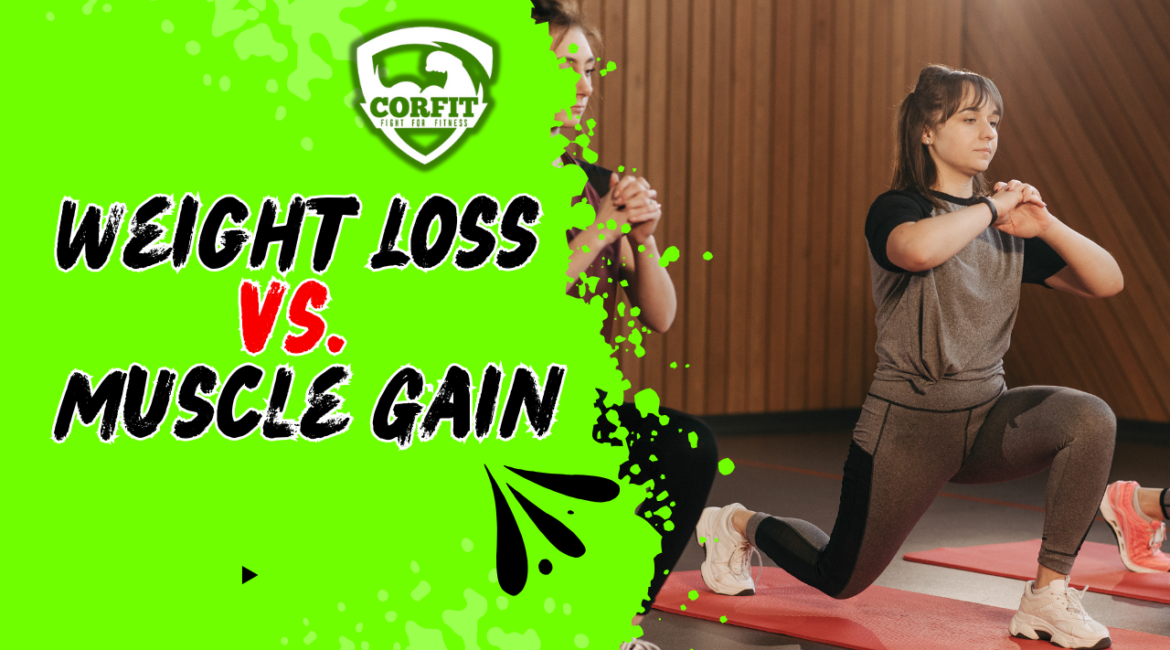When embarking on a fitness journey, two of the most common aspirations individuals have are either shedding excess weight or building lean muscle. While both require discipline, consistency, and a well-structured workout plan, their execution varies significantly. Understanding the distinct approaches needed for weight loss and muscle gain will help you achieve your goals efficiently and sustainably.
In this comprehensive guide, we will explore the best workout strategies for both objectives, discuss dietary considerations, and provide expert tips to help you maximize your results.
Table of Contents
Understanding the Difference Between Weight Loss and Muscle Gain



Weight loss primarily focuses on reducing body fat by creating a calorie deficit—burning more calories than consumed. It emphasizes cardiovascular exercise, high-intensity training, and a balanced diet to achieve fat loss.
On the other hand, muscle gain (hypertrophy) aims to increase muscle mass by following strength training routines, consuming a surplus of healthy calories, and allowing adequate recovery periods for muscle growth.
Knowing which goal aligns with your fitness aspirations is the first step in selecting the right workout plan.
Workout Plan for Weight Loss
1. Incorporate High-Intensity Cardio
Cardio exercises help burn calories and improve cardiovascular endurance. The most effective forms of cardio for weight loss include:
- Running or Jogging: Great for burning calories and improving endurance.
- Jump Rope: An excellent full-body workout that enhances coordination while torching fat.
- Cycling: A low-impact yet highly effective exercise for weight loss.
- HIIT (High-Intensity Interval Training): Short bursts of intense exercise followed by brief rest periods significantly increase calorie burn and boost metabolism.
2. Strength Training for Fat Loss
Many people mistakenly believe weightlifting is only for muscle gain, but strength training is essential for fat loss too. Resistance exercises help build lean muscle, which in turn increases metabolism and promotes fat loss even while at rest. Key exercises include:
- Squats
- Deadlifts
- Push-ups
- Lunges
- Dumbbell Press
3. Full-Body Compound Movements
Engaging multiple muscle groups in a single exercise helps burn more calories. Some effective full-body exercises include:
- Burpees
- Kettlebell Swings
- Mountain Climbers
- Rowing Machine Workouts
4. Maintain an Active Lifestyle
Incorporating more movement into daily activities can contribute significantly to weight loss. Simple lifestyle changes such as walking more, using stairs instead of elevators, and engaging in household chores can help burn extra calories.
Workout Plan for Muscle Gain
1. Strength Training with Progressive Overload
To build muscle, resistance training should be the core of your workout plan. The key principle is progressive overload—gradually increasing weights and repetitions over time. The best strength-building exercises include:
- Bench Press
- Pull-ups
- Deadlifts
- Squats
- Shoulder Press
2. Focus on Compound Movements
Compound exercises engage multiple muscle groups, leading to faster muscle growth. Some essential compound exercises include:
- Barbell Squats
- Deadlifts
- Bench Press
- Overhead Press
- Rows
3. Adequate Rest and Recovery
Muscle growth occurs during rest periods, not just in the gym. Ensure that you allow at least 48 hours of recovery time between training the same muscle groups. Additionally, getting 7-9 hours of quality sleep per night is crucial for muscle repair and growth.
4. Nutrition for Muscle Growth
Gaining muscle requires a calorie surplus, meaning you must consume more calories than you burn. A high-protein diet is essential for muscle repair and development. Key dietary recommendations include:
- Protein-Rich Foods: Lean meats, eggs, dairy, fish, and plant-based protein sources.
- Healthy Carbohydrates: Whole grains, brown rice, quinoa, and sweet potatoes provide energy for workouts.
- Healthy Fats: Avocados, nuts, olive oil, and fatty fish aid in muscle recovery.
- Hydration: Drinking sufficient water is essential for optimal muscle function and recovery.
Which Goal Should You Choose?
The choice between weight loss and muscle gain depends on your individual fitness goals. If your priority is fat loss, focus on calorie-burning workouts and maintaining a calorie deficit. If building muscle is your objective, prioritize resistance training and consume a high-protein diet to support muscle growth.
For individuals who want to achieve both—losing fat while building muscle—body recomposition is an ideal approach. This strategy combines strength training with moderate cardio while maintaining a balanced diet with adequate protein intake.
Key Takeaways for a Successful Fitness Journey
- Set Clear Goals: Define whether you want to lose weight, gain muscle, or achieve body recomposition.
- Follow a Structured Plan: Stick to a well-designed workout routine tailored to your goal.
- Stay Consistent: Results take time, so stay dedicated and patient with your progress.
- Focus on Nutrition: Fuel your body with the right foods to support your workouts and recovery.
- Monitor Progress: Track your weight, muscle gains, or fat loss to make necessary adjustments.
At Corfit Gym, we offer expert guidance, customized training programs, and a supportive community to help you reach your fitness goals. Whether you aim to burn fat, build muscle, or enhance overall health, our trainers are here to assist you every step of the way.
Start your transformation journey today at Corfit Gym and achieve the body you’ve always desired!
Stay Fit, Stay Strong!

